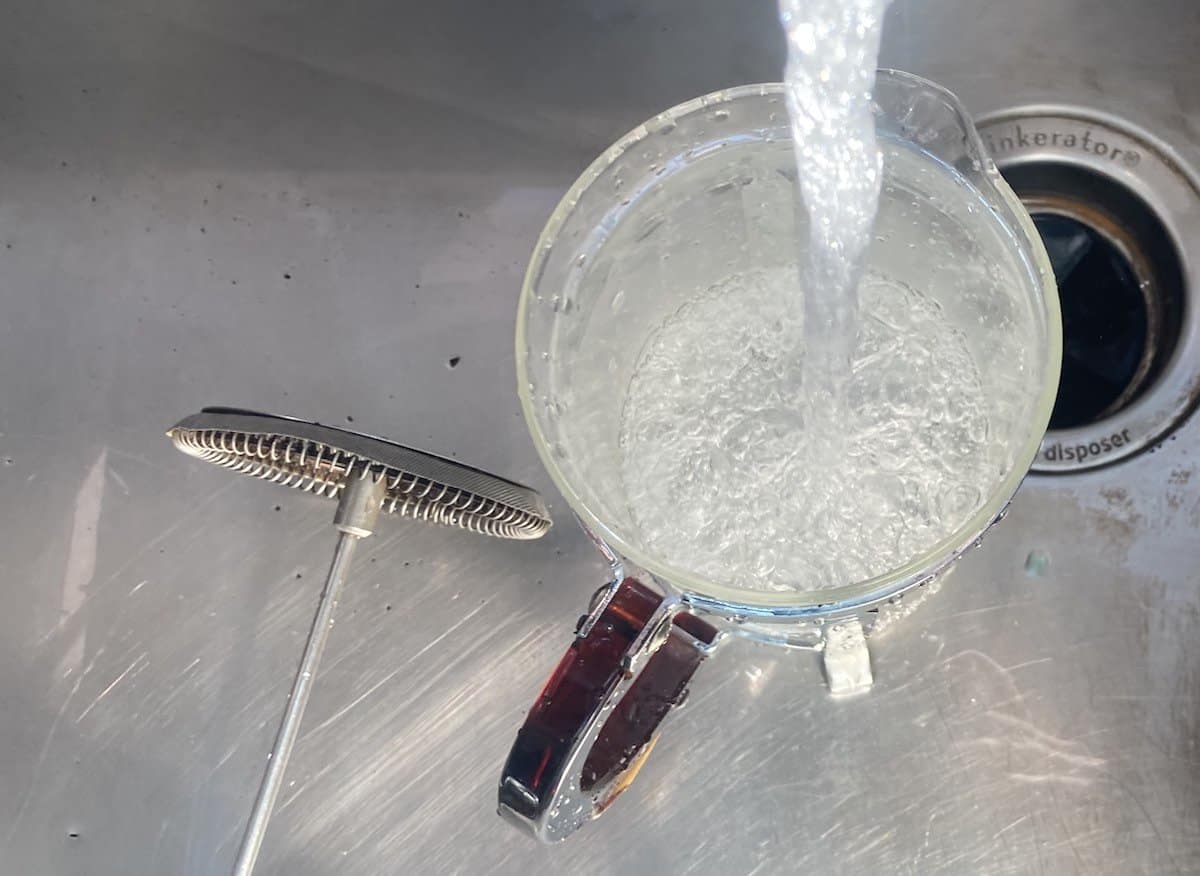Last Updated on December 17, 2023
Aficionados of fine coffee brews find little satisfaction with common filter-and-drip coffee makers. Whether you enjoy arabica or robusta, flavored or black, you will discover that a French press elevates the quality of your brew.
Also known as a cafetière, the French press allows you to adjust the coffee brewing time and lets the coffee oils have greater impact. The resulting taste is more complex, sophisticated, and alluring than the commonly brewed cups of coffee that percolate through a paper filter.
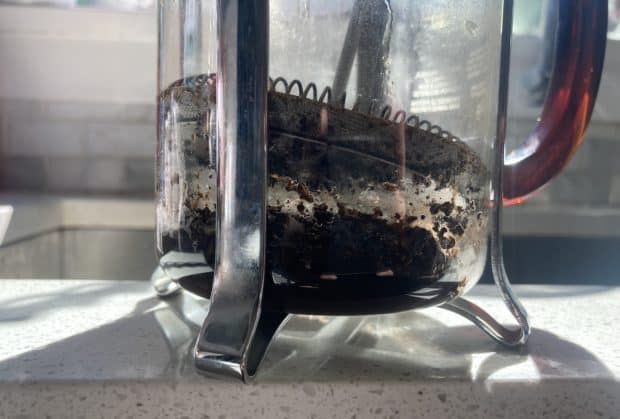
Reasons You Need To Clean Your French Press
Cleaning a French press coffee maker involves more than a quick dip in soapy water and a rinse that most people do with their glass carafe and the filter basket. Due to the design of the French press, poor or infrequent cleaning practices will lead to residual oils and coffee grounds remaining within the brewer’s walls and filter.
Similar to the residue of cooking oil, coffee oils have a tendency to become rancid after an extended period of time. The presence of these oils will diminish the taste of the coffee you brew. Over an extended period of time, coffee grounds will clog the fine mesh filter.
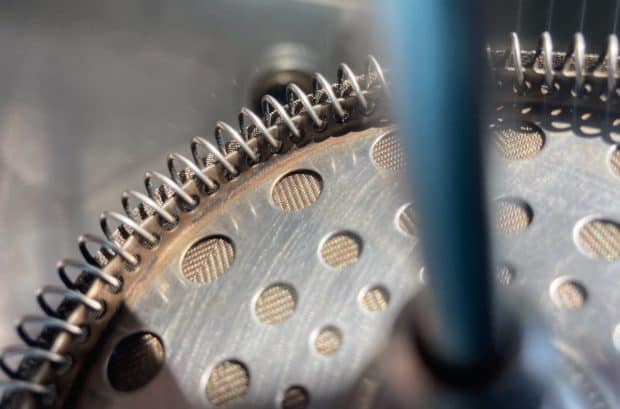
Cleaning your French press prolongs its lifespan by allowing the filters to work properly. Cleaning also helps your French press produce the right quality of fresh coffee you deserve and expect. If you have not cleaned your French press lately, you might be scrambling to look for the instruction manual. Do not worry! There are three foolproof ways to clean your French press so that it continues to deliver flavorful, strong, and delicious coffee.
Choosing the Best Method To Clean Your French Press
You may select three different ways to clean your French press:
- Handwashing: You should do this after each use, with daily cleaning preferred.
- Dishwasher: This method is appropriate for French press pitchers, plates, filters, and plungers that are dishwasher-safe.
- Deep Cleaning: To ensure that your French press endures and produces excellent coffee, a deeper cleaning should happen at least once per week for those who brew daily.
Important First Steps
Whichever option you choose, these first steps are universal:
Indulge in Your French Press Coffee and Do Nothing
Enjoy your hot coffee as the French press cools down. Allow the press to cool to room temperature to prevent any cracking or stress on the glass.
Empty the Grounds
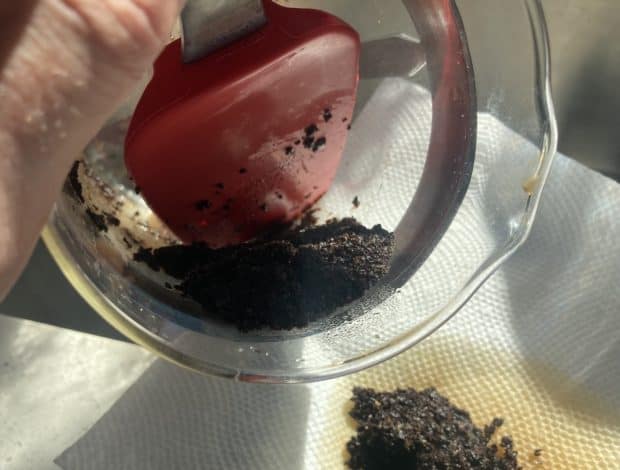
Remove as many of the grounds as possible with a spatula or your hands. Never use a metal utensil or other item that might scratch the glass, or bang the glass on the side of the garbage can. Using a paper towel or adding some water to the French press and pouring the wet grounds into a mesh sieve are effective ways to collect leftover grounds.
Discard the Grounds
Avoid discarding the grounds into your drain, even if you have a garbage disposal system, to avoid clogged pipes. If you choose to use the dishwasher, it is especially important to remove as many of the coffee grounds as possible.
With that done, here are the steps for the three main cleaning options:
Handwashing Method
1. Rinse, Add Soap and Water
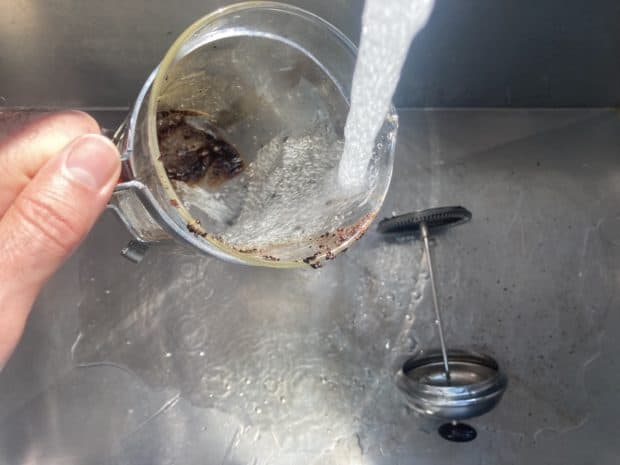
Rinse with warm water or hot water to remove any remaining coffee grounds, leaving the plunger and filter connected. Add a little soap—preferably one with a degreaser—and plunge a few times for bubbles. Add a little more soap and some lukewarm water. This should remove most coffee oils.
2. Rinse, Plunge, Scrub, and Rinse
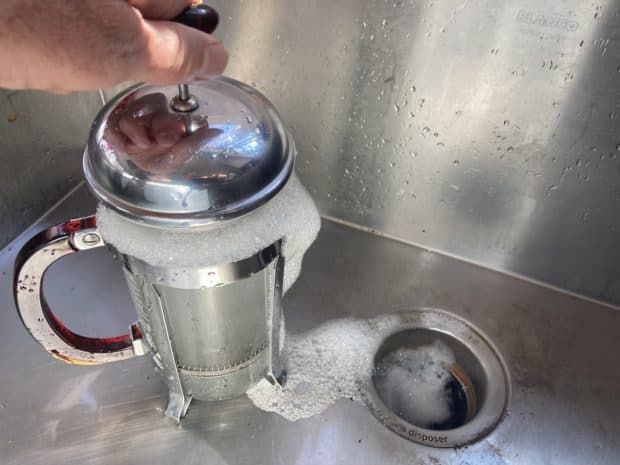
With more water in the carafe, gently plunge a few more times, scrubbing with a non-abrasive sponge or bottle brush, and rinse. Rinse again to remove any remaining soap or coffee residue.
3. One Final Rinse
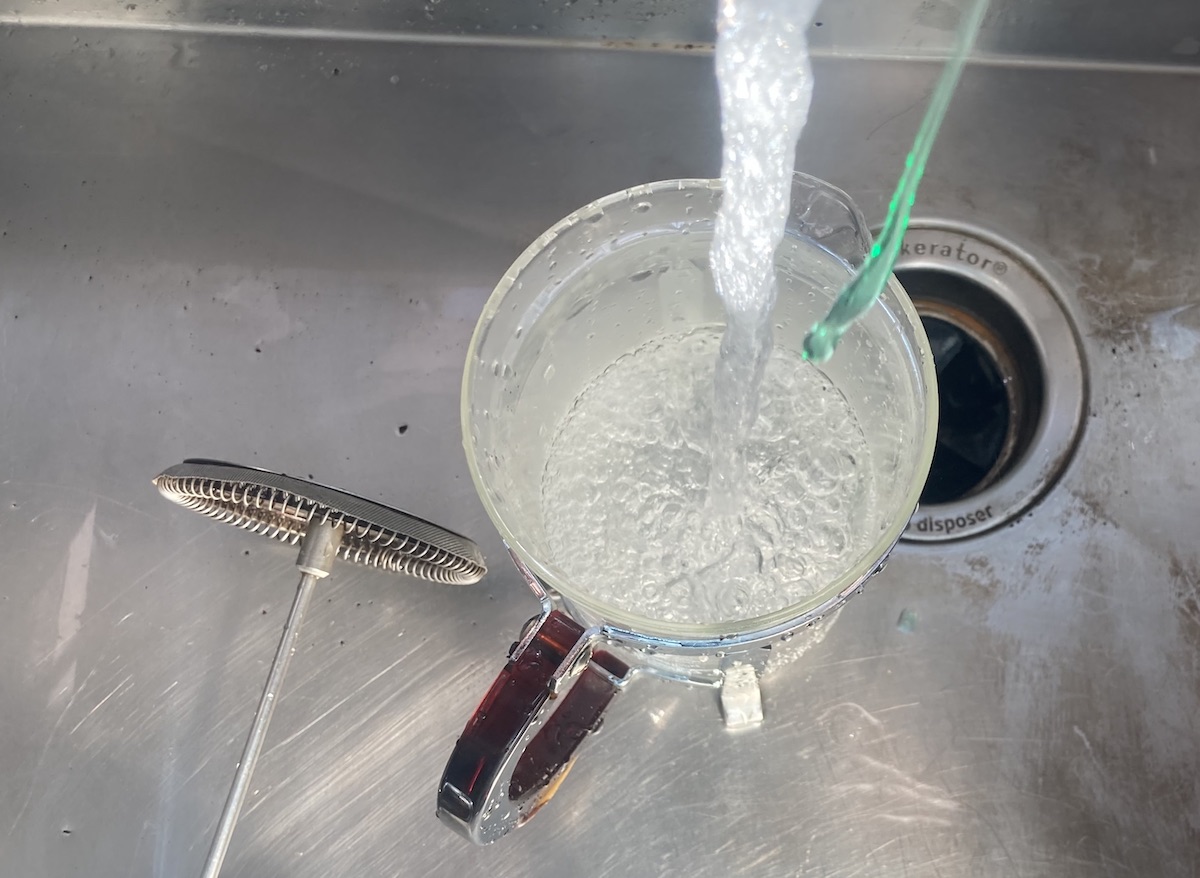
Give the glass and other pieces a final rinse, inspecting to make sure no stains remain.
4. Dry for Next Use
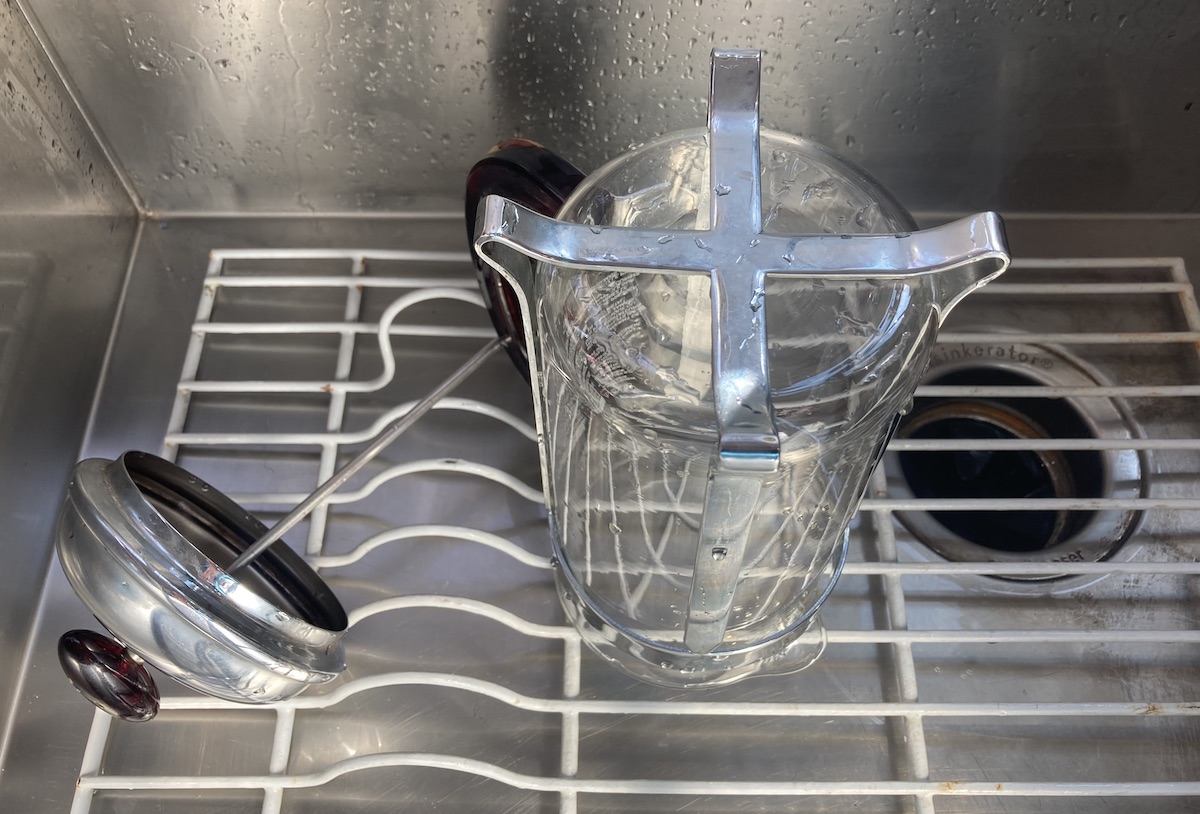
Allow the press to dry. Use a paper towel or non-abrasive cloth if necessary.
Dishwasher Method
1. Disassemble the Press
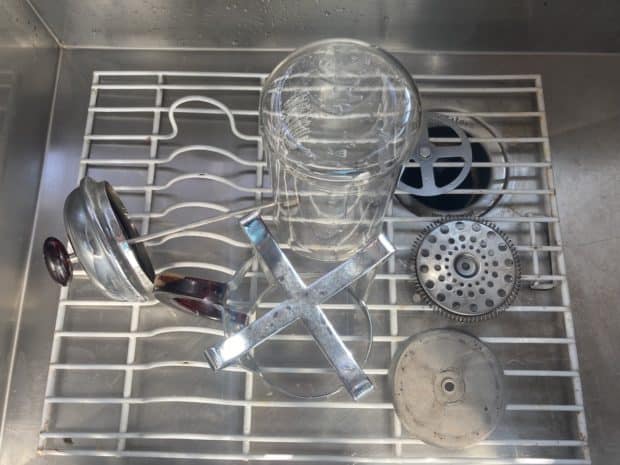
For dishwasher-safe models, disassemble the French press filter and other pieces.
2. Load the Pieces
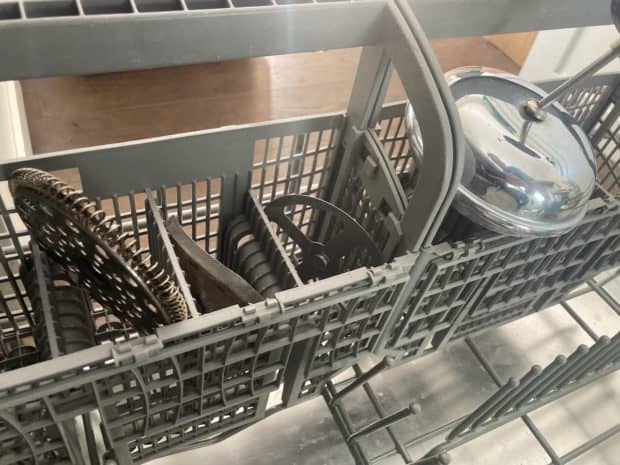
Carefully place the plunger and other smaller pieces in the silverware basket and put the glass pitcher on the dishwasher’s top rack, if possible.
3. Start the Dishwasher
Use the detergent you usually place in the dishwasher, and run both wash and dry cycles.
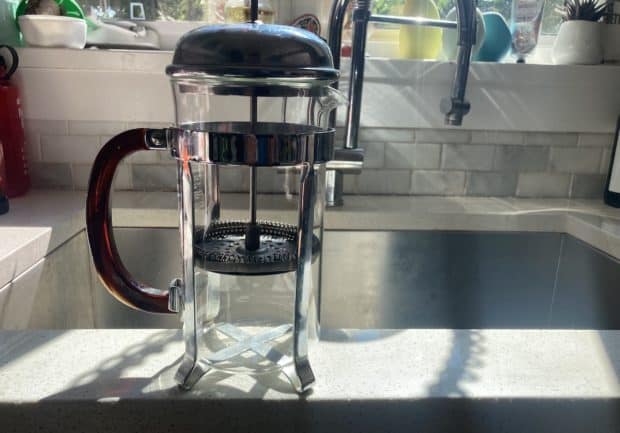
Deep Cleaning Method
1. Do a Regular Hand or Dishwasher Cleaning, Without Drying
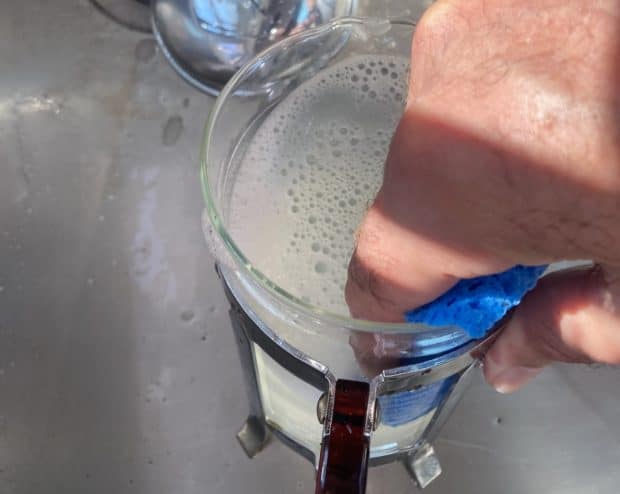
The regular cleaning process removes most of the visible stains and many of the oils, giving you a chance to take the cleaning to the next level. There is no need to dry, however.
2. Disassemble for a Deeper Clean
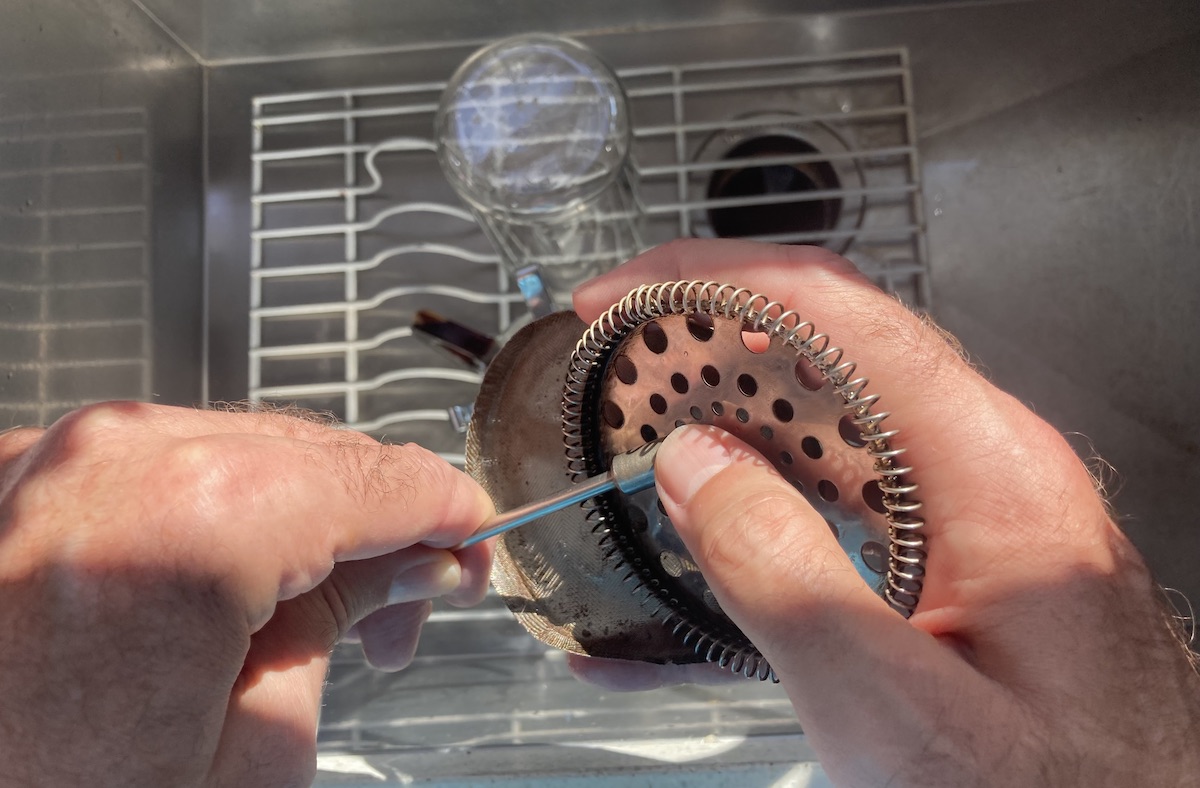
Unscrew the filter, rinsing it again to remove any stray coffee grounds. Separate the carafe, cross plate, spiral plate, plunger assembly, and mesh filter. You will probably have to unscrew the rod from the plunger base.
3. Clean With Additional Solutions
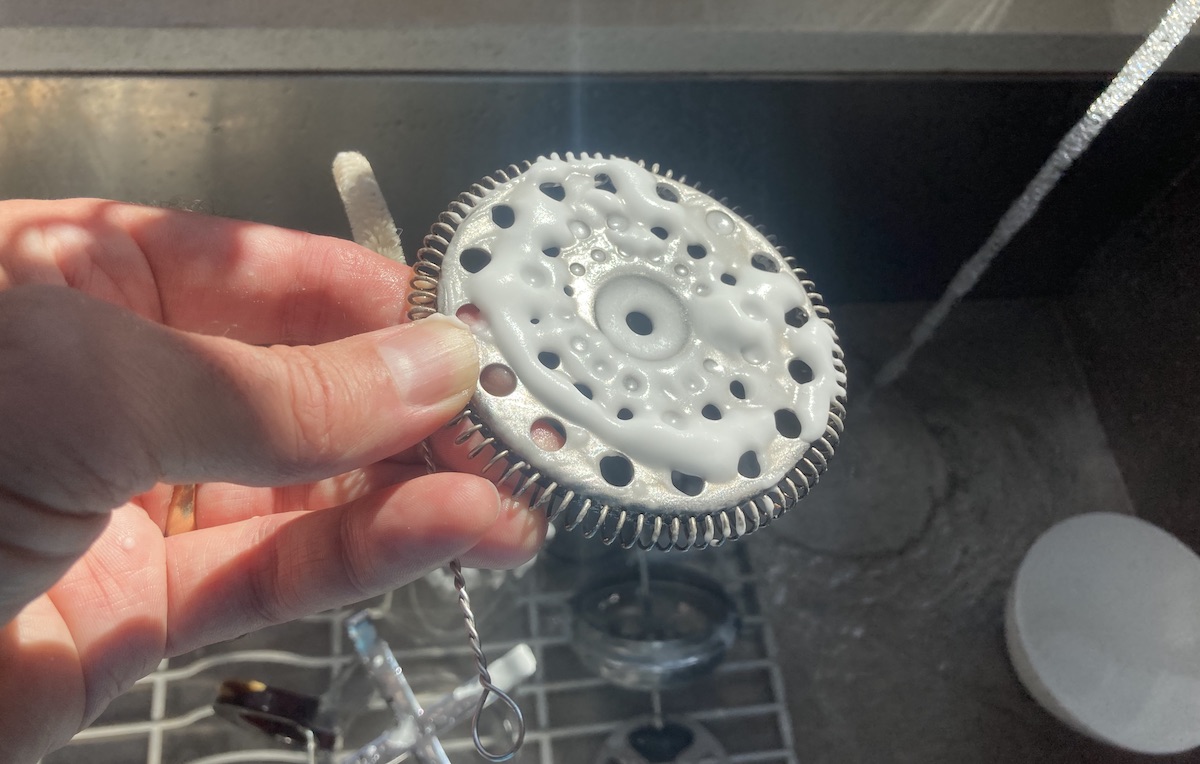
For greater effect, individually clean each part. You may choose to use a mixture of water and baking soda that has a slight pasty effect, a 50/50 mix of water and white vinegar, or another trusted, food-safe cleaner. Use your non-abrasive sponge or bottle brush to get into any corners or crevices.
4. Rinse Well and Dry
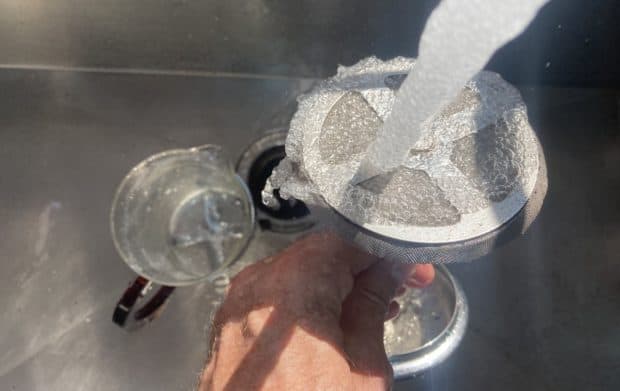
Remove any soap or other cleaning items, rinsing as necessary. Assemble the pieces after they dry for your next coffee adventure.

